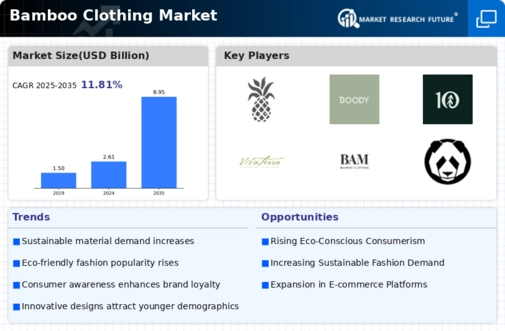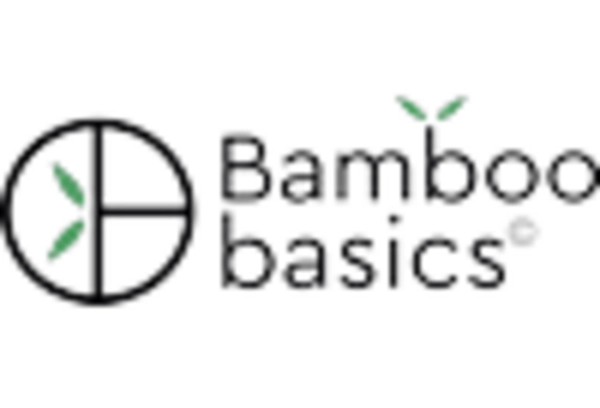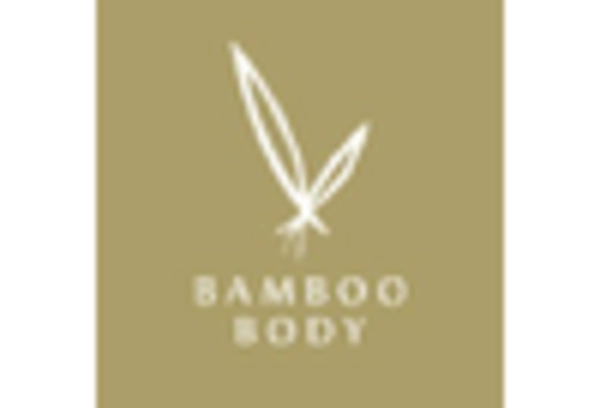Sustainability Awareness
The increasing awareness of environmental issues among consumers appears to drive the Bamboo Clothing Market. As individuals become more conscious of their ecological footprint, they tend to favor sustainable materials. Bamboo, known for its rapid growth and minimal resource requirements, presents an appealing alternative to conventional textiles. Reports indicate that the demand for eco-friendly clothing has surged, with a notable percentage of consumers willing to pay a premium for sustainable options. This trend suggests that brands focusing on bamboo clothing may experience enhanced market penetration as they align with consumer values centered around sustainability.
Health and Wellness Trends
The rising emphasis on health and wellness is likely to influence the Bamboo Clothing Market positively. Bamboo fabric is naturally hypoallergenic and possesses moisture-wicking properties, making it suitable for individuals with sensitive skin or those seeking comfort in activewear. As health-conscious consumers increasingly prioritize materials that promote well-being, bamboo clothing may gain traction. Market data indicates that the activewear segment is expanding, and bamboo's unique properties could position it favorably within this growing category, appealing to consumers who value both performance and comfort.
Diverse Consumer Preferences
The Bamboo Clothing Market is likely to benefit from the diverse preferences of consumers. As fashion trends evolve, there is a growing demand for versatile clothing options that cater to various lifestyles. Bamboo clothing, with its adaptability for casual wear, activewear, and even formal attire, appears to meet this demand effectively. Market analysis suggests that consumers are increasingly seeking multifunctional garments that can transition seamlessly between different settings. This versatility positions bamboo clothing as an attractive choice for a wide range of consumers, potentially driving sales and brand loyalty.
Regulatory Support for Sustainable Practices
Regulatory frameworks promoting sustainable practices may bolster the Bamboo Clothing Market. Governments worldwide are increasingly implementing policies aimed at reducing environmental impact, which often includes support for sustainable materials. Such regulations can create a favorable environment for bamboo clothing brands, encouraging investment and innovation in sustainable textiles. Additionally, certifications for eco-friendly products can enhance consumer trust and drive sales. As regulatory support continues to grow, it is plausible that the bamboo clothing sector will experience accelerated growth, aligning with broader sustainability goals.
Technological Innovations in Fabric Production
Technological advancements in fabric production are transforming the Bamboo Clothing Market. Innovations in processing techniques have enhanced the quality and durability of bamboo textiles, making them more competitive with traditional fabrics. For instance, advancements in fiber extraction methods have improved the softness and breathability of bamboo clothing. This evolution in production technology not only elevates the product quality but also reduces manufacturing costs, potentially leading to lower retail prices. As a result, brands that leverage these technological improvements may capture a larger share of the market, appealing to a broader consumer base.

















Leave a Comment